Running your own show as a barber or hairstylist in Northern BC is something else, isn’t it? Whether you’re set up in Prince George, Terrace, or Fort St. John, you get it. It’s so much more than a haircut. It’s about building a community, enjoying your freedom, and let’s be real, surviving those long winters with serious grit and even better style. But then tax season hits, and suddenly there’s a chill in the air that has nothing to do with the weather.
But what if you could flip the script? What if tax time wasn’t a chore, but a huge opportunity for your business? It’s your one chance to claim back every single dollar you’ve earned. That’s exactly what this guide is for. We’re going to dig into every possible tax deduction—from the ones you know to the ones you’ve probably missed—so you can keep more of your hard-earned cash where it belongs: in your pocket.
Are You Leaving Money on the Table? A Quick Look at Business Expenses
Before we jump in, let’s get one thing straight, right from the Canada Revenue Agency (CRA). You can deduct an expense if you spent the money purely to earn business income. That’s it. Simple, right?
But the CRA does like to split things into two buckets: current and capital.
- Current Expenses: Think of these as your everyday costs. That bottle of fancy shampoo you use on clients? You go through it pretty fast and have to buy more. These are the things you can deduct the full cost of in the year you buy them.
- Capital Expenses: These are the big-ticket items that stick around for a while. Your awesome, high-tech barber chair is a classic example. You don’t write off its full cost all at once. Instead, you claim a little bit of its cost over several years. It’s a process called Capital Cost Allowance (CCA).
Don’t let it stress you out. Getting this right is important, but most of what you spend daily will fall into that first category.
The Essentials: Tax Deductions Hiding in Plain Sight
Okay, you already know your scissors and clippers are deductible. But the list of things you can claim is way, way longer than you think. Every single consumable item you use to serve a client is a potential write-off. Seriously, think about your entire station and toolkit:
- Tools of the Trade: Scissors, clippers, trimmers, blades, and all those guards.
- Products: Every drop of shampoo, conditioner, gel, pomade, hairspray, dye, bleach, and developer.
- Consumables: Don’t forget the foils, neck strips, disposable razors, and sanitation liquids.
- Linens & Protection: Capes, gowns, and towels—and yes, even the cost of washing them!
Beyond the Chair: Writing Off Your Shop & Workspace
Where you work has a big impact on what you can claim. Let’s break it down.
For Shop Owners: If you rent or own your own place, the list of deductions is massive. You’re looking at:
- Commercial rent
- Utilities (hydro and heating are huge ones up North!)
- Business insurance
- Property taxes for your commercial space
For Home-Based Businesses: Got a dedicated studio or office in your home? Awesome. You can claim business-use-of-home expenses. You just need to figure out what percentage of your home is used for business and apply that number to your household bills. For instance, if your home is 1,500 square feet and your workspace is a 150-square-foot room, that’s 10%. You can then deduct 10% of your:
- Heat and electricity
- Home internet bill
- Home insurance
- Property taxes or mortgage interest
For Chair Renters: Your life is a bit simpler here. Your biggest and best deduction is the chair rental fee you pay to the salon owner. It’s a 100% deductible business expense. Easy peasy.
From Prince George to Smithers: Claiming Your Car and Travel
Let’s be honest, living in Northern BC means you’re probably doing a lot of driving. If you use your personal vehicle for work, you can deduct a slice of its expenses. This covers any work-related trips, like:
- Driving to a supplier in the next town over
- Making a house call for a mobile appointment
- Hitting the road for a professional development course
The most important thing here? Keep a logbook. It doesn’t have to be fancy, but it has to be thorough. Note your odometer at the start and end of the year, and jot down the kilometres for every single business trip. At tax time, you’ll figure out the percentage of your driving that was for business and apply that to your total vehicle costs (gas, insurance, repairs, even your car payments).
Sharpening Your Skills: Can You Write Off That Advanced Fading Course?
Heck yes, you can. Any money you pour back into upgrading your professional skills is deductible. We’re not talking about learning a brand new trade, but about courses that help you stay on top of your game and get better at what you do. This includes:
- Costs for courses, workshops, and seminars
- Subscriptions to industry magazines and journals
- Fees for professional associations you belong to
Getting the Word Out: Deducting Marketing & Client Costs
How do people find you? Whatever you spend on advertising and promotion is a business expense. Think about:
- Those social media ads you run on Instagram or Facebook
- Website hosting and any design fees
- Business cards, flyers, and posters
And what about schmoozing? If you take a potential client out for coffee to discuss doing the hair for their wedding party, you can deduct that. But there’s a catch: the CRA puts a 50% limit on meals and entertainment. So, if that coffee and lunch costs you $40, you can only claim $20.
The Unseen Savers: 7 Overlooked Tax Deductions for BC Barbers
These are some of the deductions people miss all the time. Are you grabbing all of them?
- Bank Fees: That monthly fee for your business bank account? It’s 100% deductible.
- Accounting and Legal Fees: The money you pay an accountant or lawyer to help with your business stuff is a write-off.
- Cell Phone Bill: Figure out what percentage you use your phone for work (booking clients, social media) and deduct that portion of your bill.
- Music Subscriptions: Pay for a service like Spotify Business to play tunes in your shop? That’s a business expense.
- Protective Gear: The cost of gloves, masks, aprons, and other gear you use for safety and hygiene is deductible.
- Interest on Business Loans: If you took out a loan for equipment or to start up, the interest you pay on it can be deducted.
- Bad Debts: It stinks, but it happens. If you’ve already claimed income from a client who then ghosts you without paying, you can later deduct that amount as a bad debt.
Frequently Asked Questions
1. I run my whole client schedule through Instagram DMs on my personal phone. How do I figure out the business part of my bill?
The CRA just wants you to be reasonable. Take a look at a typical monthly bill and make an honest estimate. How much of your data and time was spent on business versus scrolling for fun? If you land on a 60/40 split, you can deduct 60% of your bill.
2. What’s the real difference between an expense like new clippers and a capital asset like a $2,000 barber chair?
It all comes down to lifespan. You’ll burn through clippers and replace them every so often—that’s an expense you deduct in full the year you buy it. But that fancy chair is going to last for years. It’s a capital asset. You can’t claim the whole $2,000 at once; instead, you claim a piece of the cost each year using the Capital Cost Allowance (CCA) system.
3. Can I claim my work clothes? You know, the cool sneakers I only wear in the shop?
Probably not. The CRA sees regular clothing as a personal expense, even if you only wear it at work. The only real exception is a specific uniform that you’re required to wear, especially if it has a company logo on it.
4. I’m a self-employed hairstylist in BC. When do I have to start charging GST/HST?
In Canada, you’re what’s called a “small supplier” until your revenue (before any expenses) tops $30,000 over four straight calendar quarters. Once you cross that line, you have to register for, collect, and send in GST.
5. I drove from Terrace to Prince George for a hair show and stayed the night. Can I deduct my hotel and meals on top of my mileage?
Yes! When you have to travel for business and stay overnight, you can absolutely deduct your transportation (like mileage), your hotel room, and 50% of your meal costs. Keep those receipts!
Your Quick Checklist & What to Do Next
Honestly, staying organized is half the battle. As you go through the year, just try to keep track of what you’re spending in these big categories:
- Supplies & Tools: Everything from foils to clippers.
- Workspace: Rent, hydro, or home office costs.
- Vehicle: Don’t forget that mileage log!
- Professional Development: Courses and subscriptions.
- Marketing: Ads, website fees, business cards.
- Office & Admin: Bank fees, accounting help, phone bill.
We’ve covered a ton of ground, and hopefully, you’re feeling more confident about tracking your expenses. But your business is as unique as your signature haircut, and tax rules can get tricky. To make absolutely sure you’re getting back every penny you deserve while staying on the CRA’s good side, the smartest move is always to talk to a pro.
An accountant who really gets the world of self-employed trades in British Columbia can give you advice that’s built specifically for you. Want that clarity and confidence come tax season? Get in touch with an expert here and make sure you’re not leaving any money on the table.

